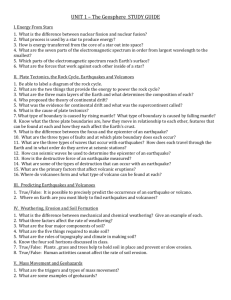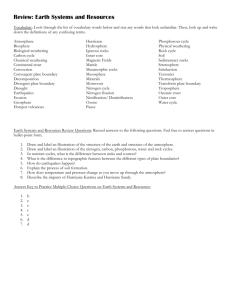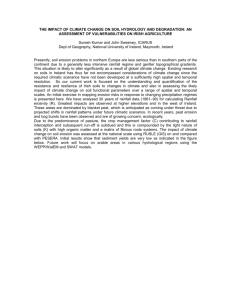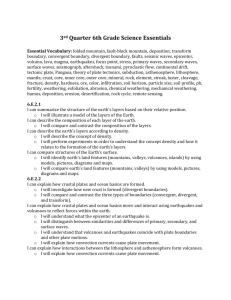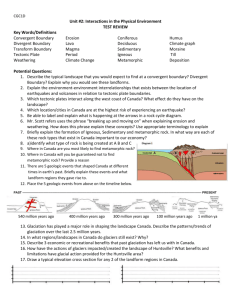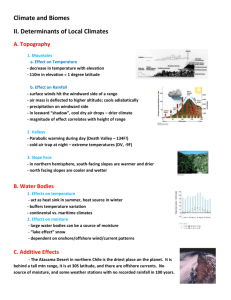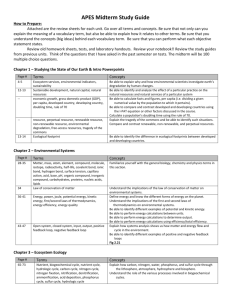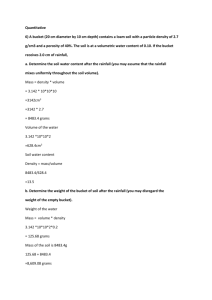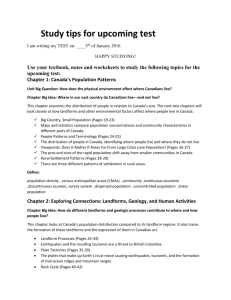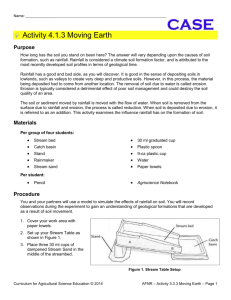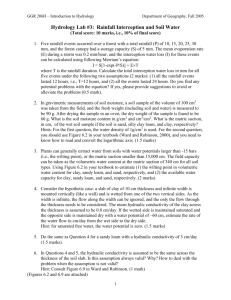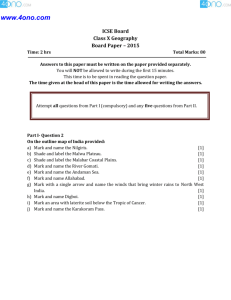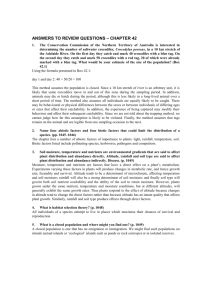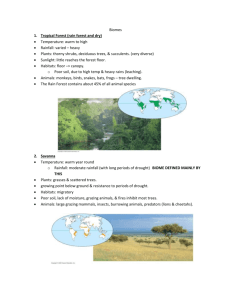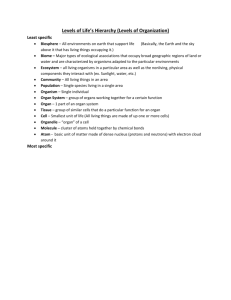Regions of Canada/Ecozones
advertisement
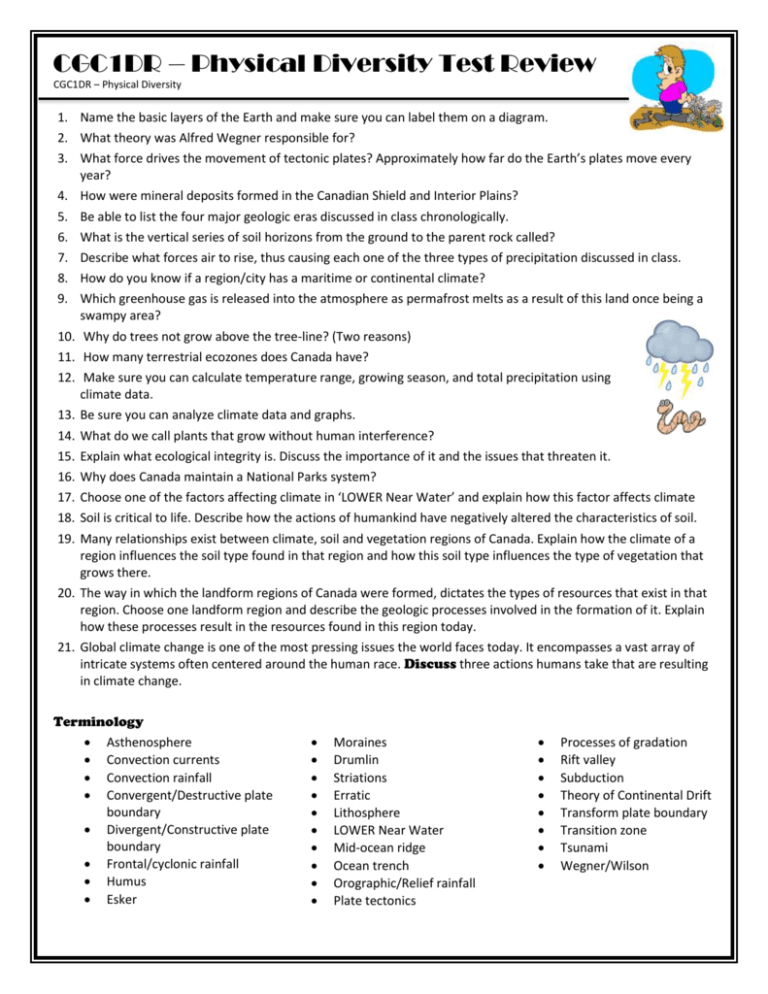
CGC1DR – Physical Diversity Test Review CGC1DR – Physical Diversity 1. Name the basic layers of the Earth and make sure you can label them on a diagram. 2. What theory was Alfred Wegner responsible for? 3. What force drives the movement of tectonic plates? Approximately how far do the Earth’s plates move every year? 4. How were mineral deposits formed in the Canadian Shield and Interior Plains? 5. Be able to list the four major geologic eras discussed in class chronologically. 6. What is the vertical series of soil horizons from the ground to the parent rock called? 7. Describe what forces air to rise, thus causing each one of the three types of precipitation discussed in class. 8. How do you know if a region/city has a maritime or continental climate? 9. Which greenhouse gas is released into the atmosphere as permafrost melts as a result of this land once being a swampy area? 10. Why do trees not grow above the tree-line? (Two reasons) 11. How many terrestrial ecozones does Canada have? 12. Make sure you can calculate temperature range, growing season, and total precipitation using climate data. 13. Be sure you can analyze climate data and graphs. 14. What do we call plants that grow without human interference? 15. Explain what ecological integrity is. Discuss the importance of it and the issues that threaten it. 16. Why does Canada maintain a National Parks system? 17. Choose one of the factors affecting climate in ‘LOWER Near Water’ and explain how this factor affects climate 18. Soil is critical to life. Describe how the actions of humankind have negatively altered the characteristics of soil. 19. Many relationships exist between climate, soil and vegetation regions of Canada. Explain how the climate of a region influences the soil type found in that region and how this soil type influences the type of vegetation that grows there. 20. The way in which the landform regions of Canada were formed, dictates the types of resources that exist in that region. Choose one landform region and describe the geologic processes involved in the formation of it. Explain how these processes result in the resources found in this region today. 21. Global climate change is one of the most pressing issues the world faces today. It encompasses a vast array of intricate systems often centered around the human race. Discuss three actions humans take that are resulting in climate change. Terminology Asthenosphere Convection currents Convection rainfall Convergent/Destructive plate boundary Divergent/Constructive plate boundary Frontal/cyclonic rainfall Humus Esker Moraines Drumlin Striations Erratic Lithosphere LOWER Near Water Mid-ocean ridge Ocean trench Orographic/Relief rainfall Plate tectonics Processes of gradation Rift valley Subduction Theory of Continental Drift Transform plate boundary Transition zone Tsunami Wegner/Wilson

